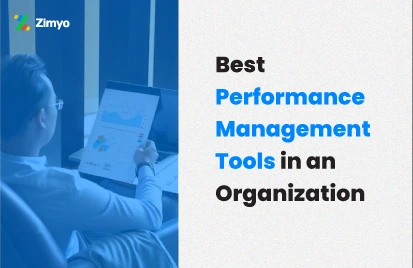There is an old saying that goes, “Success is where preparation and opportunity meet”, similarly the success of any organization’s succession planning plays a critical role. It is a key element of efficient organization management, which ensures a smooth transition of critical roles and responsibilities.
In today’s dynamic and ever-changing landscape, there is a need for organizations to evolve with it and thus a well-structured and effective succession planning comes into the picture.
To enhance succession planning you need methodologies, and the best out of all the tools would be Objectives and Key Results (OKRs). OKRs seamlessly align organizational objectives with individual performance metrics and ensure that talent development is strategically directed toward meeting the leadership needs of the future.
What is Succession Planning?
The term succession planning refers to the process of identifying and developing employees within an organization to fill key roles and leadership positions when they become vacant. Its goal is to ensure that there is a smooth transition of leadership and hence continuity is maintained of essential functions within the organization.
Succession planning is crucial for the long-term sustainability and success of an organization as it helps prevent disruptions that may occur when key leaders leave the organization due to resignation, retirement, or passing away. Succession planning helps organizations by:
- Identifying critical roles
- Assessing the competencies required for those roles
- Recognizing key talents
- Identifying skill gaps
- Strategically grooming and developing potential employees
- Ensuring continuity and smooth transitions
Another name for succession planning is replacement planning, but it goes beyond that. It involves creating strategies to address the evolving needs of the organization and mitigate the risks associated with leadership gaps. The essence of succession planning lies in ensuring the organization has the right people in key roles both today and in the future.
According to an SHRM survey, 56 percent of HR professionals report that their organization didn’t have a succession plan in place but with the evolving landscape, organizations have realized the importance of succession planning. Overall, it is a structured approach that ensures the seamless transition of critical positions by developing a pipeline of talented individuals capable of taking on higher responsibilities.
What are OKRs?
OKRs stand for Objective and Key Results, is a goal-setting tool used by organizations to track the performance of employees. HR teams and other heads of departments define objectives that are challenging and track their outcomes. OKRs are a tool for tracking outcomes, fostering alignment, and promoting participation around quantifiable objectives.
The breakdown of components is as follows:
Objectives (O): Objectives are a team’s or an individual’s broad goals that they aim to accomplish. They are qualitative, inspirational, and provide direction. Objectives should be ambitious and aligned with the organization’s overall mission.
Key Results (KR): Key Results is basically what you have done to achieve that objective. They are precise, quantifiable, and time-bound results that show how close an aim is to being accomplished. These are the measurable benchmarks or successes that aid in determining whether the goal was successful. Each objective may have multiple key results.
Organizations can more effectively create objectives and track their progress by combining Key Results with Objectives. OKRs are widely used in organizations to align teams, improve performance, and encourage a culture of transparency and accountability. They are applicable at various levels of an organization, from company-wide goals to team-specific objectives and individual contributions.
Unleash Roadmap to Success!
Aligning OKRs with Succession Planning
As you know succession planning is one of the essential factors for the success of any organization. This depends on the performance of the employees and OKRs are one the most powerful tools to gauge performance.
Aligning OKRs with succession planning helps to ensure there is a synchronization between the development of key leadership talent and the organization’s strategic goals. This alignment is essential for creating a smooth and efficient process that not only recognizes potential leaders but also methodically builds their abilities and skills. Let’s look into detail how OKRs are strategically aligned with succession planning:
1. Identifying Leadership Competencies
First, start the process with a thorough analysis of the leadership competencies required for key roles within the organization. This calls for a deep understanding of the skills, traits, and behaviors that contribute to effective leadership in the specific context of the organization.
Convert these recognized leadership skills into ambitious objectives. These objectives ought to capture the qualities and skills that employees must have to drive the organization ahead.
2. Cascading OKRs Down the Hierarchy
Once the objectives are defined at the organizational level, cascade them down to specific teams and departments. This ensures that each unit’s objectives contribute directly to the broader leadership requirements of the organization.
Managers at all levels should work together with their teams to match the recognized leadership competencies with OKRs at the departmental and team levels. This alignment ensures a coordinated and coherent effort throughout the organization.
3. Establishing Individual Development Plans
Work in close collaboration with employees to establish their OKRs that are in line with their professional growth and the leadership skills needed for succession planning. This step is essential for tailoring the succession planning process to the distinct strengths and development needs of each employee.
There should be a two-way dialogue between the team managers and employees during the OKR setting process. This simple step ensures that employees have a clear understanding of the strategic goals of the organization and also gives managers insights into the aspirations and growth objectives of individual team employees.
4. Measuring Progress and Performance
Use Key Results to gauge employees’ progress as compared to the set competencies. These key results should be Specific, Measurable, Achievable, Relevant, and Time-bound (SMART), providing a clear and quantifiable indication of employee progress.
Regularly assess and discuss Key Results to provide constructive feedback. This step thus helps in a continuous improvement cycle, where employees can adjust their efforts based on the feedback, ensuring that they remain on track to meet leadership competency requirements.
What are the Benefits of Integrating OKRs with Succession Planning?
Now that we know how can we align OKRs with succession planning, let’s see the benefits drawn from it.
1. Gives Proper Clarity and Focus
Integrating OKRs with succession planning ensures that employees have a clear understanding of the leadership competencies that are required for future roles. This clarity thus helps employees to develop specific skills and qualities needed for succession. OKRs provide a clear roadmap for employees, ensuring that their efforts are aligned with the strategic goals of the organization.
2. Promotes Continuous Improvement
There is always room for continuous improvement and learning due to the iterative nature of OKRs. Based on regular OKR assessments, employees can adapt and refine their development plans and enhance their readiness for leadership roles.
3. Increases Transparency and Accountability
OKRs promote transparency as the goals and progress are visible throughout the organization. This makes employees accountable for their contributions to succession planning. The shared visibility thus helps team members understand what collective efforts they have to put toward the development of leadership, creating a culture of mutual accountability and responsibility.
4. Making Data-Driven Decisions
OKRs provide precise and quantitative results, you can analyze this data to make informed decisions. This data-driven approach enables organizations to objectively assess performance and identify high-potential employees. By relying on measurable outcomes, leaders can make strategic decisions about talent development and ensure the success of effective succession planning.
Unleash Roadmap to Success!
Conclusion
For the smooth running of your organization, you need effective succession planning. For succession planning to work you need to gauge the performance of your employees thus OKRs come into the picture to help you with it. The incorporation of OKRs into the succession planning process offers an organized, goal-oriented methodology that aligns personal and organizational objectives.
Companies may develop a strong talent pipeline of employees prepared to take on critical responsibilities by defining leadership skills, implementing OKRs across the entire organization, and tracking progress using Key Results. OKRs are a useful tool for accomplishing smooth succession planning because of their mix of focus, clarity, transparency, and data-driven decision-making. This ultimately helps the organization to succeed and remain sustainable over the long run.
Whether you have a start-up or an enterprise, you can progress your business and remain sustainable by incorporating OKR software like the one provided by Zimyo. Zimyo will help you in proper performance management and thus have effective succession planning.
FAQs
Succession planning is the process of identifying and developing employees within an organization to fill key roles and leadership positions when they become vacant due to resignation, retirement, or passing away.
OKRs are goal-setting tools used by organizations to track the performance of employees. They track outcomes, foster alignment, and promote participation around quantifiable objectives.
OKRs is a tool that gives leaders focus, clarity, and transparency to make data-driven decisions. It thus helps in gauging the performance of potential employees and making the succession planning process very smooth.




